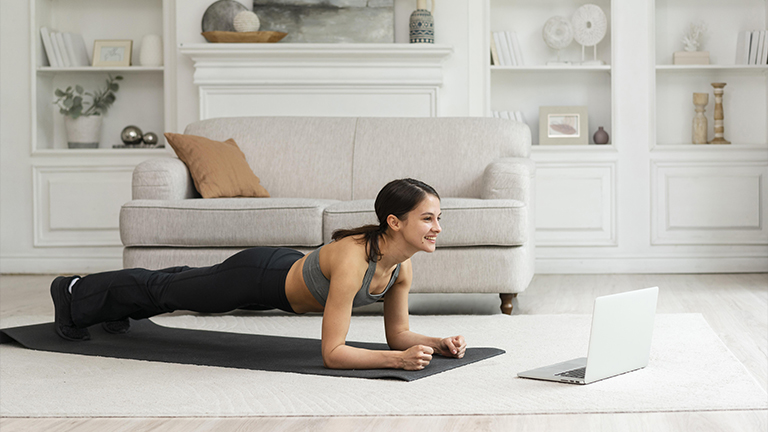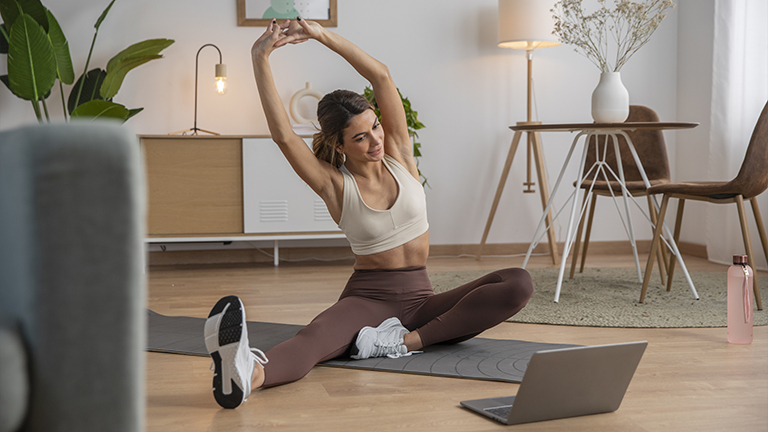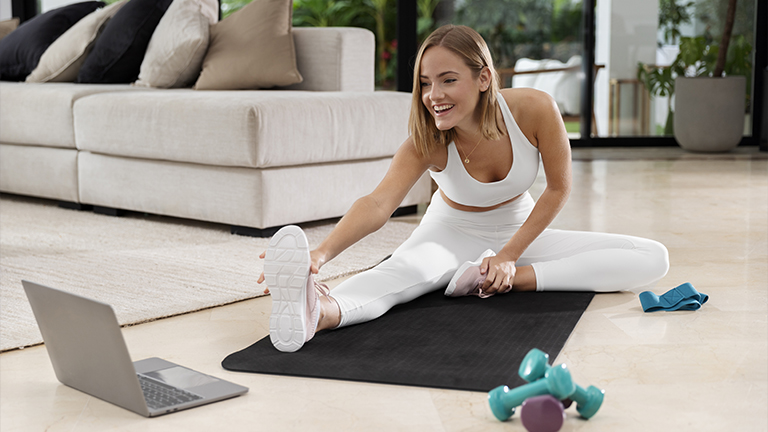Home workouts have become a go-to fitness solution for millions of people worldwide, offering convenience, flexibility, and results without the need for a gym membership. Whether you’re aiming to lose weight, build muscle, or simply stay active, finding the best home workout for your goals can be a game-changer.
In this guide, we’ll explore effective home workouts, routines for different goals, the best equipment to invest in, and tips for creating your own plan — all while avoiding common mistakes that can slow your progress.
1. Benefits of Home Workouts
(Why working out at home is effective and convenient)
Exercising at home offers a variety of benefits that make it appealing for busy lifestyles and budget-conscious individuals:
- Time-saving – No commute to the gym, just start training immediately.
- Cost-effective – No monthly fees; minimal or no equipment needed.
- Privacy – Exercise without feeling self-conscious in a public space.
- Flexibility – Work out anytime, whether it’s early morning, during lunch, or late at night.
- Customizable – Tailor your routine to match your fitness goals, whether it’s fat loss, strength, or flexibility.
Studies have shown that home workouts can be just as effective as gym training if done consistently with proper intensity and technique.
2. Best Home Workouts with No Equipment
(Bodyweight exercises for strength and endurance)
You can achieve a full-body home workout using only your body weight. These no-equipment home exercises build muscle, burn calories, and improve endurance:
Upper Body
- Push-ups – Standard, wide-grip, and diamond variations.
- Tricep Dips – Using a sturdy chair or bench.
- Pike Push-ups – Great for shoulder strength.
Lower Body
- Squats – Bodyweight, sumo, or jump squats.
- Lunges – Forward, reverse, and walking lunges.
- Glute Bridges – Activates glutes and hamstrings.
Core
- Plank Variations – Standard, side planks, and plank with shoulder taps.
- Mountain Climbers – Engages core while boosting cardio.
- Bicycle Crunches – Targets obliques and abs.
Performing 3–4 sets of 12–15 reps for each movement is enough to see noticeable results in strength and endurance.
3. Top Home Workout Routines for Different Goals
Here’s how to choose the best home workout routines depending on your objectives:
A. Fat Loss & Cardio
- HIIT (High-Intensity Interval Training) – 20–30 minutes of alternating intense bursts (e.g., burpees, jump squats) with short rests.
- Jump Rope – Burns calories fast while improving coordination.
- Burpees – A full-body exercise that builds stamina and burns fat.
B. Strength Training
- Push-ups, Squats, Lunges – Build foundational strength.
- Resistance Band Rows & Presses – Great for muscle building without heavy weights.
- Dumbbell Deadlifts & Shoulder Presses – If you have equipment, these are highly effective.
C. Flexibility & Balance
- Yoga – Improves flexibility, balance, and mental relaxation.
- Pilates – Strengthens core muscles and enhances posture.
- Dynamic Stretching – Keeps joints healthy and mobile.
4. Best Equipment for Home Workouts (Optional)
While no-equipment home workouts are effective, adding a few affordable items can level up your training:
- Dumbbells – Versatile for both strength and conditioning.
- Resistance Bands – Portable and joint-friendly.
- Kettlebells – Great for explosive power and full-body conditioning.
- Yoga Mat – Essential for floor exercises and stretching.
- Pull-up Bar – Ideal for upper body and back strength.
5. How to Create a Weekly Home Workout Plan
(Sample schedules for beginners & advanced)
Beginner’s Plan (3–4 days/week)
Day 1: Full-body strength (push-ups, squats, lunges, planks)
Day 2: Rest or light yoga
Day 3: HIIT workout (jump squats, burpees, mountain climbers)
Day 4: Rest or stretching
Day 5: Full-body strength
Day 6: Yoga or Pilates
Day 7: Rest
Advanced Plan (5–6 days/week)
Day 1: Upper body strength + core
Day 2: Lower body strength
Day 3: HIIT cardio
Day 4: Full-body dumbbell workout
Day 5: Yoga or Pilates for recovery
Day 6: Strength & cardio mix
Day 7: Rest
6. Common Mistakes to Avoid in Home Workouts
(Form errors, overtraining, lack of consistency)
- Poor Form – Can lead to injuries; focus on technique first.
- Overtraining – Give muscles time to recover.
- Skipping Warm-ups & Cool-downs – Increases injury risk.
- Lack of Progression – Gradually increase reps, sets, or resistance.
- Inconsistency – Stick to your schedule for long-term results.
7. Best Apps & Online Resources for Home Workouts
(Free & paid options like Nike Training Club, Peloton, YouTube channels)
- Nike Training Club – Free and premium guided workouts.
- Peloton App – Offers strength, cardio, yoga, and meditation sessions.
- FitOn – Free workouts with celebrity trainers.
- YouTube Channels – Fitness Blender, MadFit, Chloe Ting, Pamela Reif.
8. FAQs About Home Workouts
Q: Can you build muscle with home workouts?
Yes. Progressive overload using bodyweight or equipment like resistance bands and dumbbells can build significant muscle.
Q: How long should a home workout be?
20–45 minutes is ideal, depending on intensity and goals.
Q: What’s the best time to exercise at home?
Anytime you can be consistent — morning workouts boost energy, while evening sessions can help release daily stress.
Final Thoughts
The best home workout is one you can do consistently, enjoy, and that matches your goals. Whether you stick to no-equipment exercises or invest in some simple gear, home training can deliver results comparable to the gym. By combining the right exercises, proper technique, and progressive challenges, you can achieve strength, endurance, and overall health — all from the comfort of your home.



